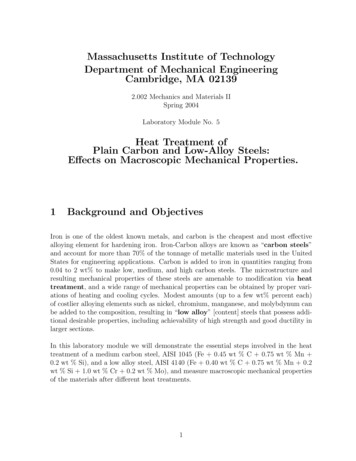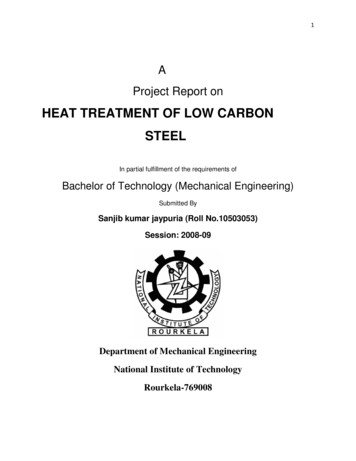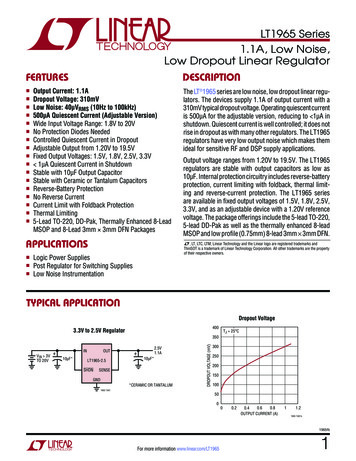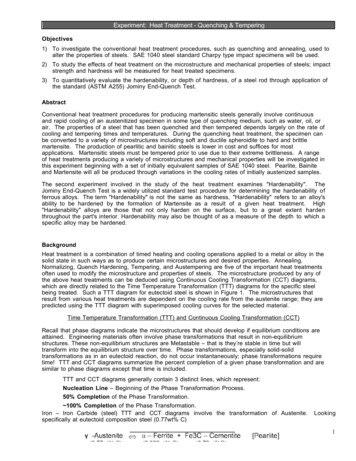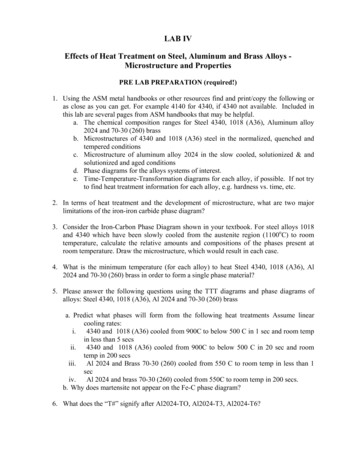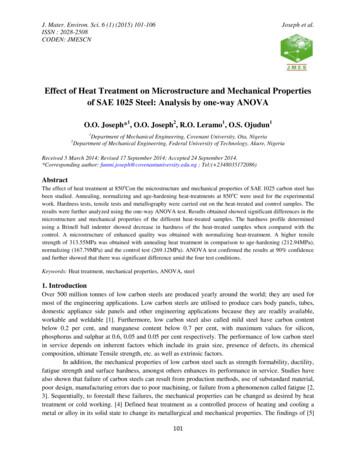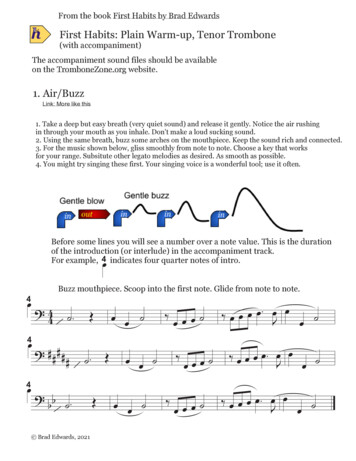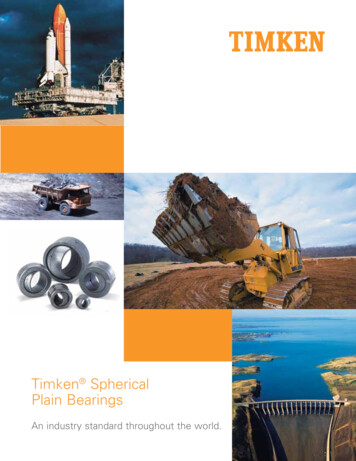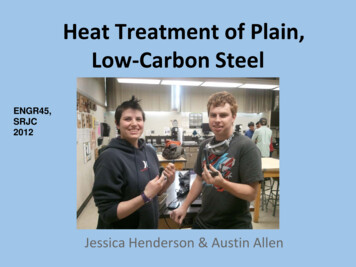
Transcription
Heat Treatment of Plain,Low-Carbon SteelENGR45,SRJC2012Jessica Henderson & Austin Allen
What's in an E45 blems-Results-Analysis-Conclusion
How would a fire affect the strength of astructure?
Examining heat treated steel1. Tensile strength2. Grain size3. Microstructure4. Rockwell Hardness test(rb)
ResearchWhat kind of steel is used for structures?What will happen to the tensile strength of steel with heattreatment?How will the heat treatment affect the grain size?What microstructure should we see?How will the hardness relate to the heat treatment?
What we learned from our research:-Applications of low-carbon steel-No significant difference expected in Yield strength-Grains grow as sample is heated-Larger grains means a softer material
What we expected from our testing:Microstructure:We expect pearlite and spheroidite, and we know thatspheroidite microstructure is the softest
Process1. Heat Treat2. Clean and Measure3. Tensile test4. Mount, grind, and polish5. Etch and examine
Heat Treat1. Mark all samples2. Austenize all samples at 1400 F to control thestarting microstructure3. Heat samples I and X at 1250 F to turn pearliteto spherodite
Clean and measure1. We used wire brushes to clean off some of theoxidization layer2. We needed to clean the threads using a die set andWD403. Be careful not to damage the surface of the samples,as it would affect the results.4. We measured length, diameter, and hardness beforetesting.
Time to TEST!!!1. Safety goggles and safetypanel2. Put the sample in, and turn onthe machine.3. Zero the instruments.4. Turn up the force!5. Record data6. Have an *adult tightenextensometer
Prepare sample formicroscope1. Cut off a lengthwise slice ofthe specimen. (careful-theyget hot!)2. Mount the samples in bakeliteusing the specimen mountpress.3. Polish the samples using thegrinding/polishing stations
Etch and examine under the digitalmicroscope1. With our protective equipment donned, we usean ethanol/nitric acid solution to etch themounted specimens.2. Using the digital microscope provided at thematerials lab, we took pictures ofthe microstructure and grain sizes.
Problems Samples Austenitizedtwice after accidentaloven useBakelite takes longer tocure than expectedNeeded to rethread oursamples after oven useDo not unload duringtensile strength testJessica ripped her pants
Results1.Tensile test: confirmed2.Grain size: confirmed3.Microstructure: confirmed4.Hardness: confirmed
Tensile testOur testing supported:-U.T.S. decreased according to microstructure-Fracture point increased for softer samples
Tensile Strength: As expected-Pearlite structure is harder than spheroidite-Our spheroidite samples matched closelyU.T.S. decreased according to microstructure
Toughness went down for samples heatedlongerToughness is the area under the curve: as thesample endured longer heat treatment, it lostsome toughness.
Fracture point increased for softer samplesThe spheroidite samples stretched significantlymore than the non heat treated specimen.
% Elongation: As expected
Grain size: confirmedThe grain size for the control sample was, onaverage, smaller than the 1 hour spheroiditesample. The sample that baked for 4 hours hadthe largest grains.
No heat treatment1 HourAustenitized only4 Hours
Microstructure: confirmedControl sample
Microstructure: confirmed1 hour spheroidite sample
Microstructure: confirmed4 hour sample
Hardness: As expectedOur rockwell hardness test supported our tensile graphs, andshowed that the pearlite microstructure is harder than eitherof the spheroidite samples.
AnalysisOverall, our results confirmed our research andhypothesis.Science did work for us!
ConclusionHow does a fire affect a steel structure?Our results showed that in every way, heatingsamples below austenization temp makes themweaker.
Sources: Callister, William D., Jr. An Introduction. Ed. David G. Renthwisch. 8th ed. N.p.: n.p., 2010.Print.Carbon steel. N.p.: n.p., 2012. Wikipedia. Web. 5Dec. 2012. http://en.wikipedia.org/wiki/Carbon steel .
Heat Treatment of Plain, Low-Carbon Steel . Jessica Henderson & Austin Allen . ENGR45, SRJC . 2012
